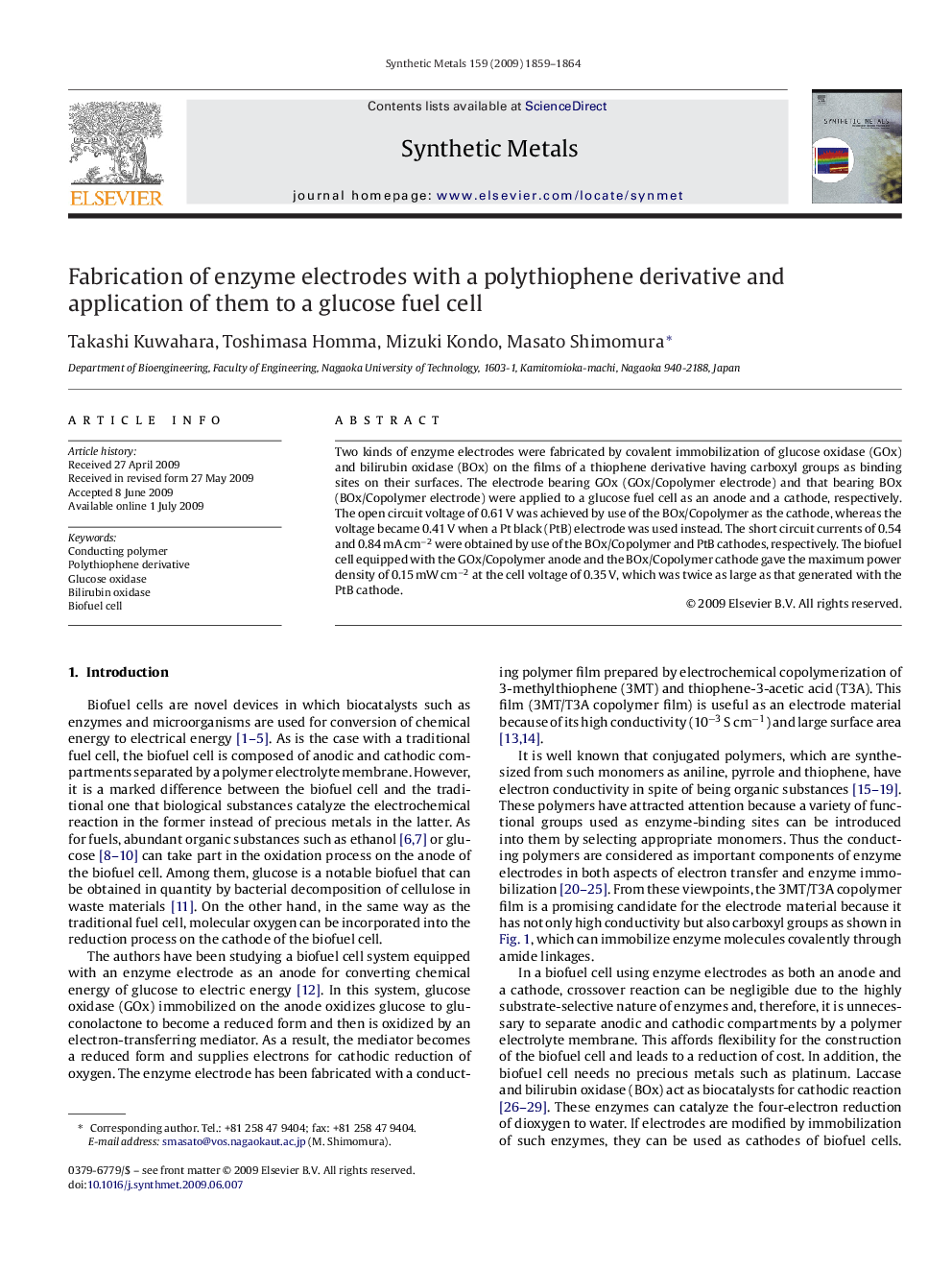| Article ID | Journal | Published Year | Pages | File Type |
|---|---|---|---|---|
| 1442986 | Synthetic Metals | 2009 | 6 Pages |
Two kinds of enzyme electrodes were fabricated by covalent immobilization of glucose oxidase (GOx) and bilirubin oxidase (BOx) on the films of a thiophene derivative having carboxyl groups as binding sites on their surfaces. The electrode bearing GOx (GOx/Copolymer electrode) and that bearing BOx (BOx/Copolymer electrode) were applied to a glucose fuel cell as an anode and a cathode, respectively. The open circuit voltage of 0.61 V was achieved by use of the BOx/Copolymer as the cathode, whereas the voltage became 0.41 V when a Pt black (PtB) electrode was used instead. The short circuit currents of 0.54 and 0.84 mA cm−2 were obtained by use of the BOx/Copolymer and PtB cathodes, respectively. The biofuel cell equipped with the GOx/Copolymer anode and the BOx/Copolymer cathode gave the maximum power density of 0.15 mW cm−2 at the cell voltage of 0.35 V, which was twice as large as that generated with the PtB cathode.
